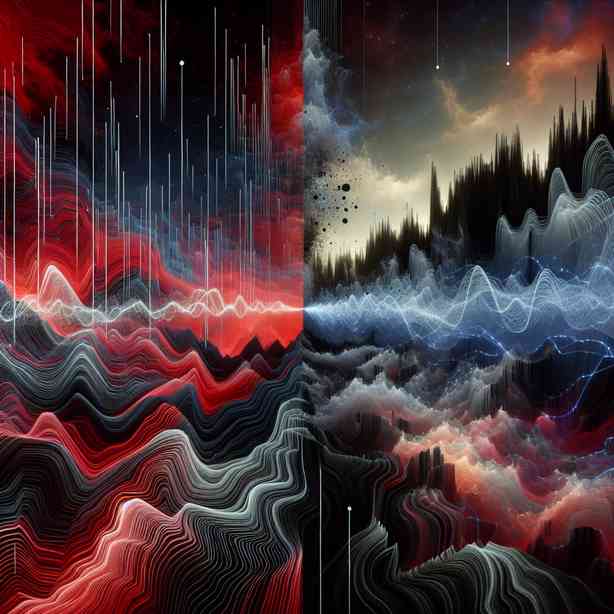
Sound is a powerful medium, capable of communicating emotions, ideas, and atmospheres in ways that words often cannot. Among the various components of sound design and music composition, one of the most crucial elements is that of tension and release. This concept is pivotal in engaging listeners, evoking emotions, and creating dynamic experiences that resonate on a profound level.
Tension refers to a state of mental or emotional strain, often marked by anticipation or discomfort. In the auditory realm, tension can be created through unexpected harmonies, dissonance, rhythmic complexity, or sudden dynamic shifts. On the other hand, release can be thought of as the resolution of that tension, where the ear finds comfort and satisfaction. This interplay between tension and release not only drives the narrative in music and sound but also influences how we perceive and respond to what we hear.
Echoes of tension can manifest in various musical forms, from the dissonant chords in a suspenseful film score to the syncopation in a jazz piece that keeps listeners on the edge of their seats. For instance, consider how a simple two-chord progression can be manipulated to create a sense of anxiety. By delaying the resolution of the first chord and extending the time before it resolves to the second, a palpable tension is established. The listener feels an urge or need for resolution, which, when it finally arrives, creates a powerful sense of release.
Each genre has its unique methods of crafting tension and release. In classical music, composers like Beethoven and Wagner have deftly navigated this dynamic, often building complex layers of tension that culminate in grand, cathartic conclusions. In the realm of contemporary music, artists might use electronic effects to create tension through distortion, minimalism, or unexpected shifts in tempo and texture, revealing modern sensibilities while adhering to the age-old craft of emotional storytelling through sound.
The role of silence in this dynamic should not be underestimated. Silence, or the absence of sound, is an effective tool for creating tension. A sudden pause can leave listeners in a state of anticipation, heightening their senses and making them acutely aware of what may come next. Historically, composers and sound designers have used silence strategically to punctuate moments, thereby enhancing the impact of subsequent sounds or musical phrases.
In film, the art of tension and release is crucial in crafting emotional responses. Soundtracks often use these principles to underscore the visual narrative. A rising string section might build tension as the protagonist faces a critical decision, while a sudden quiet or a gentle piano melody can offer a release, allowing the audience a moment to breathe before the story escalates once again. The emotional journey facilitated by sound profoundly impacts how viewers engage with a film, lending weight to the storytelling that is often visceral and immediate.
In live performances, the interplay of tension and release can create an electrifying atmosphere between the performer and the audience. Musicians often gauge the audience’s energy, adjusting their performance to either heighten or relieve tension according to the mood of the room. The powerful effect of timing—knowing when to pull back, when to build, and when to release—becomes a shared experience that deepens the connection between artist and listener.
Moreover, the concept of tension and release transcends music and sound design, extending into various forms of storytelling. Whether in literature, visual art, or theater, the structure of tension and resolution is a universal element that captures the complexity of human experience. A gripping novel builds tension through conflict and characters’ struggles, only to release that tension through resolution and closure, mirroring the auditory experiences of sound.
Exploring the physiological and emotional responses to sound reveals the intricate workings behind our engagement with tension and release. Neuroscience has shown that these elements impact our brain’s reward system. When tension builds in a musical piece and is followed by release, our brain releases dopamine, offering pleasure and satisfaction, and reinforcing our emotional connections to the music and the feelings it evokes.
As technology has evolved, so too has our understanding and application of tension and release. With the advent of digital audio workstations (DAWs) and advanced sound synthesis, sound designers today can manipulate nuances in ways that were once unimaginable. The capacity for granular control allows for the exploration of tension within minute details, enabling subtleties that contribute to a greater emotional depth in compositions. This innovative approach invites a multitude of creative possibilities, as artists can experiment with unconventional soundscapes that challenge traditional perceptions of music and sound.
In many ways, the techniques used to create tension and release are akin to a narrative arc. Just as stories have climaxes and moments of respite, sound can similarly ebb and flow, taking listeners on a journey that evokes a range of emotions. This narrative structure in soundscapes captivates audiences, offering an immersive experience that can transport them beyond the present moment.
In conclusion, the art of tension and release in sound is an essential principle that enriches both music and sound design. It serves as a powerful tool for storytelling, emotional engagement, and audience connection. Whether through the unexpected use of dissonance, the strategic application of silence, or the innovative manipulations of modern technology, the dynamics of tension and release hold the potential to create profound and lasting impressions on listeners. As artists continue to explore and push the boundaries of sound, the resonance of these principles promises to remain integral to the evolution of auditory expression. Understanding and applying these concepts can elevate both the experience of creating and listening to music, opening up new avenues for emotional exploration and artistic expression.


